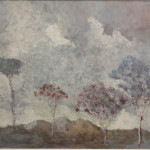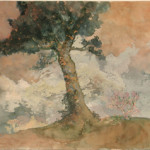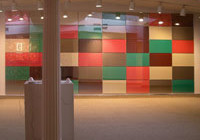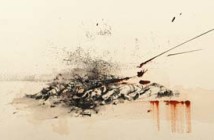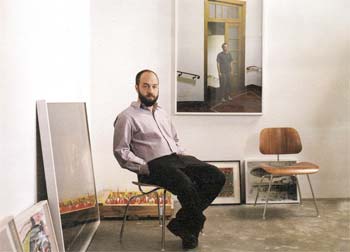Last evening I attended a lecture at the Museum of Fine Arts by Michael Kimmelman, chief art critic of the New York Times, and subsequently bought his new book "The Accidental Masterpiece: On the Art of Life and ViceVersa." Of the French painter Pierre Bonnard (1867-1947), Kimmelman wrote the following:
....he still tends to be regarded as an art-historical anachronism: an impressionist after impressionism was dead. Bonnard was thought to be too soft; modern art has accustomed us to abrasiveness. We're wary of an art of paradisiacal beauty, whose complexity and peculiar sadness aren't immediately apparent. (p. 10 -11).
If post 9/11 art does not scream fear, anger, destruction, disaster or confusion, one may question its strength. Like those who still question Bonnard's artistic path, some may wonder why an American painter today would create idyllic landscapes inspired by impressionism or any other established style enhancing an escapist feel. In most of his new watercolors exhibited at Gallery Naga, Robert Ferrandini offers one a quiet, momentary haven in a cloudy warmly-toned landscape, injected with the soft light of hope. In his work, he reflects his admiration for Redon's palette of softly blended colors, Turner's abstract strokes, and Monet's flat blues, pinks, and violets in his late paintings of water lilies.
In Ferrandini's watercolors on paper, abstractions express atmospheric components of the landscape in harmony with solid forms - the earth, mountains, trees and rocks. A blend of pink and orange clouds against a sky with violet blue and white tones adds balance to a twisting tree with expressive branches, growing leftward from the earth ("Untitled 5"). Upon close examination, a portion of the clouds recalls the clouds in the right corner of Redon's pastel “Ophelia among the Flowers” (1905-08) in the National Gallery in London. A seascape with a grey veil of fog, gently moving across a seemingly cold body of water, shows a group of black rocks in the distance ("Untitled 32"). Ferrandini's method of blending blues, greys and whites against the solidity of the rocks in this area of the work looks like a miniaturized version of a watercolor by Turner at the Tate in London entitled “The Mewstone, from Sequels to the Liber Studiorum (‘Little Liber’) Watercolors,"(c. 1823-35). The expressive blue, pink and purple tones in the sky above a landscape with four varied blooming trees and a mountainous background (“Untitled 37”) recall abstract reflections on the pond in Monet's “Water Lilies Landscape” (1907) at the Museum of Fine Arts, Boston.
Despite his stroke in October 2001, impacting his ability to paint with his right hand, Ferrandini persisted, training his left hand to replace the role his right hand used to play. Perhaps the light brown and beige tones that sometimes intermingle with the soft pastel tones mirror the harsh challenges that life sometimes brings. Even so, his work, overall, soothes the soul - inviting one to take a quiet journey into a peaceful world.
Links:
Gallery Naga
Redon at the National Gallery
Monet at the Museum of Fine Arts
"New Watercolors" is on view from October 14 - November 5, 2005 at Gallery Naga.
All images are courtesy of the artist and Gallery Naga.
quote taken from Michael Kimmelman. "The Accidental Masterpiece: On the Art of Life and ViceVersa." New York: The Penguin Press, 2005.


